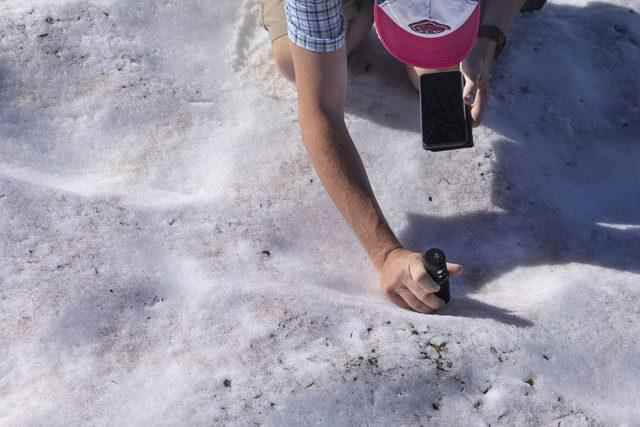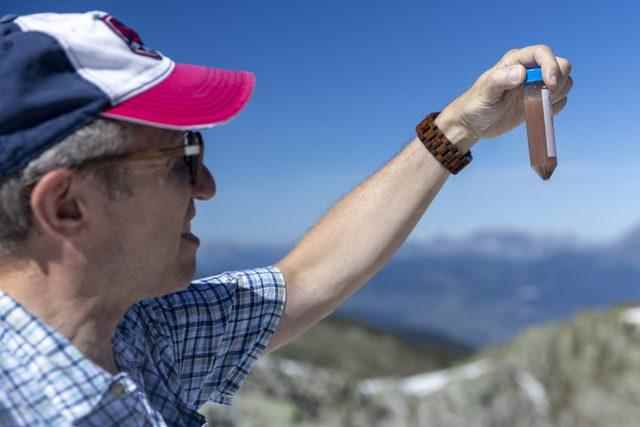Spots of red snow shimmering in the sunlight in the French Alps surprised those who saw it. According to the news of Reuters; Eric Marechal of the National Scientific Research Center in Grenoble and his colleagues collected samples of red snow on Mount Le Brevent, about 2,500 meters above sea level. This phenomenon, known as “snow blood,” has scientists worried.
RED SNOW!
Photographs show patches of red snow shimmering in the sunlight. This phenomenon is thought to be caused by algae. Although microalgae are said to have a green color, they seem to turn red when exposed to strong sun rays. “These algae are green. But when they’re in the snow, they’re accumulating a little bit of pigment to protect themselves, like sunscreen,” Marechal said.
Rising global temperatures are also disproportionately affecting the Alps. And scientists are racing to better understand red snow before it’s too late.

“There are two reasons to study algae. The first is that it’s an underexplored area, and the second reason is that this area is melting before our eyes. So it’s kind of urgent,” Marechal said. used the phrases.

SNOW AND GLACIERS ALL AROUND THE WORLD CAN BE AFFECTED
One thing is for sure, this phenomenon known as “snow blood” is accelerating snowmelt. Scientists think this may be due to climate change. They also say that higher levels of carbon dioxide in the atmosphere cause red snow to occur more often.

If algae spreads, the melting of snow and glaciers around the world could accelerate.
